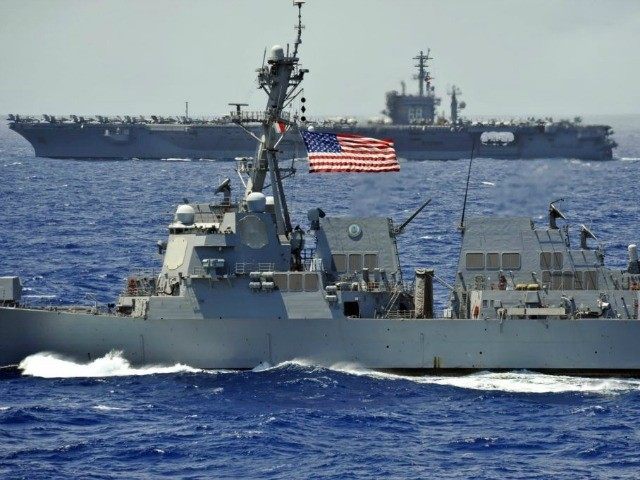WASHINGTON – A Pentagon budget for 2018 with more money to increase the U.S. presence in the Asia-Pacific region may be coming soon.
“I will tell you that on the surface it makes sense that we would want to have adequate resources to fund our forward presence there,” said Pentagon spokesman Navy Capt. Jeff Davis at a press briefing this week.
The Pentagon’s leaders have endorsed a plan to invest nearly $8 billion to bulk up the U.S. presence in the Asia-Pacific region during the next five years by upgrading military infrastructure, conducting additional exercises, and deploying more forces and ships, according to the Wall Street Journal.
The plan is seen by supporters as a way to signal U.S. commitment to the region, amid concerns over North Korea’s illicit nuclear weapons program.
Additional military assets in the region could also help give the U.S. more deterrent power. Last month, U.S. Pacific Command ordered the aircraft carrier USS Carl Vinson to head north towards North Korea as speculation grew that Pyongyang was planning to conduct its sixth nuclear test on the weekend of its late founder’s birthday.
Although the carrier would not actually arrive for weeks, North Korea did not conduct a test that weekend, instead holding a large military parade.
The potential funding has generated great interest in the Asia-Pacific region.
China has increasingly challenged the U.S.’s military presence in what it considers its regional sphere of influence and has slammed past U.S. Freedom of Navigation Operations (FONOPs) – where U.S. ships transit through sometimes-contested waters to keep them open for international commerce – in the South China Sea.
So far, the Trump administration has not conducted such operations, despite early suggestions it would. Since taking office, the administration has only drawn closer to China, in hopes of tackling the threat from North Korea’s rogue nuclear weapons program.
The plan to beef up the military’s presence in East Asia could complicate the cozier relationship, but it is a move that will likely be supported by allies Japan and South Korea. The U.S. has played the role of guarantor of stability in the region since World War II.
The plan already has strong support from Congress, which is in charge of passing the budget. Last week, the Senate Armed Services Committee chairman, who first floated the idea, tweeted the WSJ‘s article, adding, “Must-read.”
Davis said there is already some discussion about whether the money goes into the Pentagon’s “base” budget or its wartime funding account, known as Overseas Contingency Operations.
“We haven’t rolled out our fiscal year ’18 budget request yet. That will happen hopefully in the next couple of weeks,” he added.
The proposal is dubbed the “Asia-Pacific Stability Initiative” and is modeled after the European Reassurance Initiative, or ERI, which aimed to reassure Eastern European allies after Russia invaded Ukraine and annexed the Crimea peninsula in 2014.
The total amount would be $7.5 billion, or $1.5 billion per year for five years.
“If used strategically, it can help stem the tide of the military challenges we face in the Pacific,” Kelly Magsamen, who was an acting assistant secretary of defense for Asian and Pacific Affairs under former President Barack Obama, told the WSJ.
But she said it has to be tied to specific requirements for U.S. Pacific Command. “It shouldn’t just be a slush fund for Pacom.”

COMMENTS
Please let us know if you're having issues with commenting.